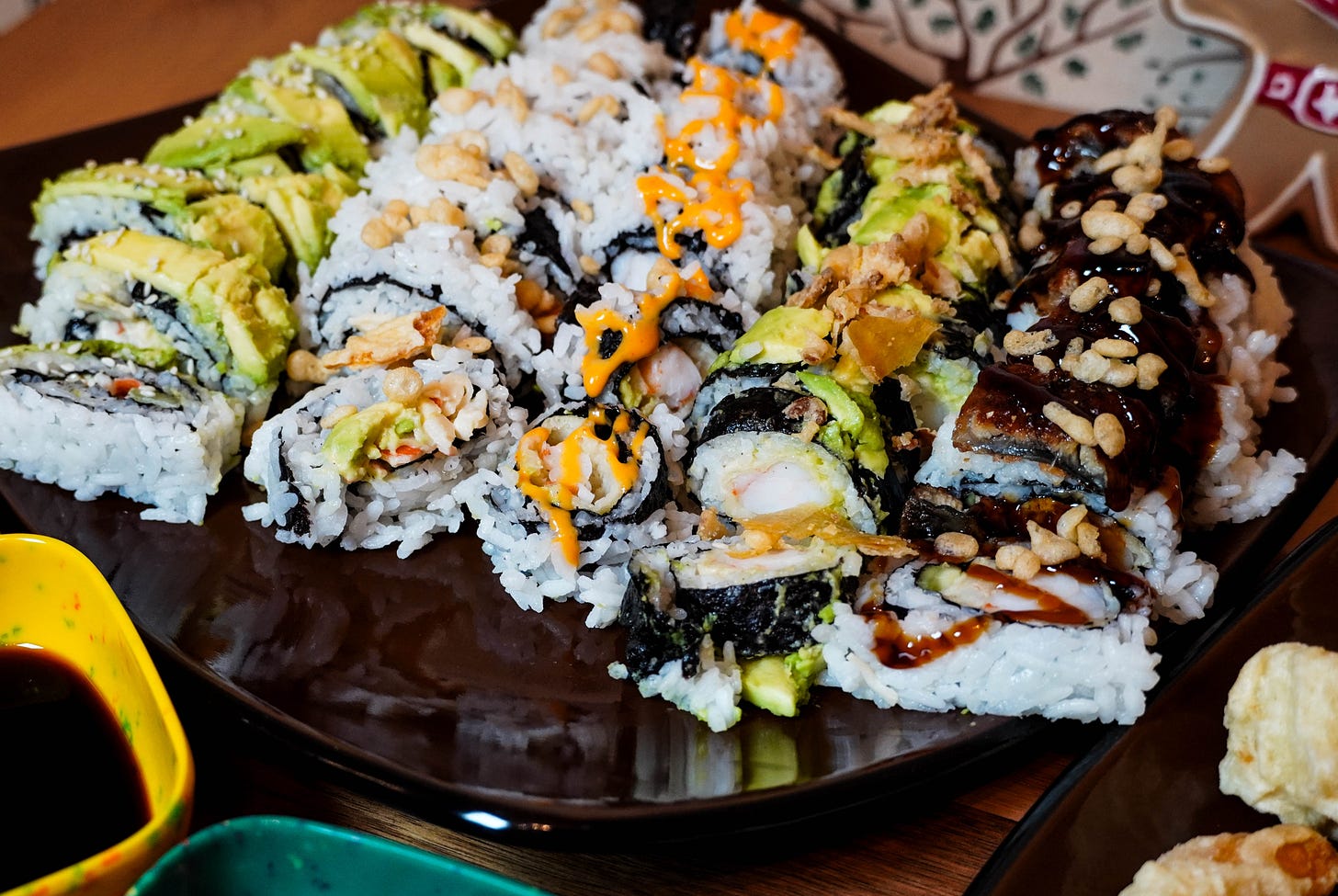Sushi Sample Platters For Sergio Perez
Oh, Sergio — you left me grasping at straws. Let's make some sushi for Las Vegas!
Welcome to Grand Prix Gastronomy! In 2024, this series is dedicated to cooking the favorite dishes of every driver on the grid.
The Foods That Sergio Perez Loves
If you haven't noticed, quite a few editions of this season of Grand Prix Gastronomy have come courtesy of an old recurring feature on F1's website: There is only one. Here, drivers picked a bunch of their favorite things — tracks, cars, and, of course, food — in what constitutes 2016's attempt at humanizing F1 drivers.
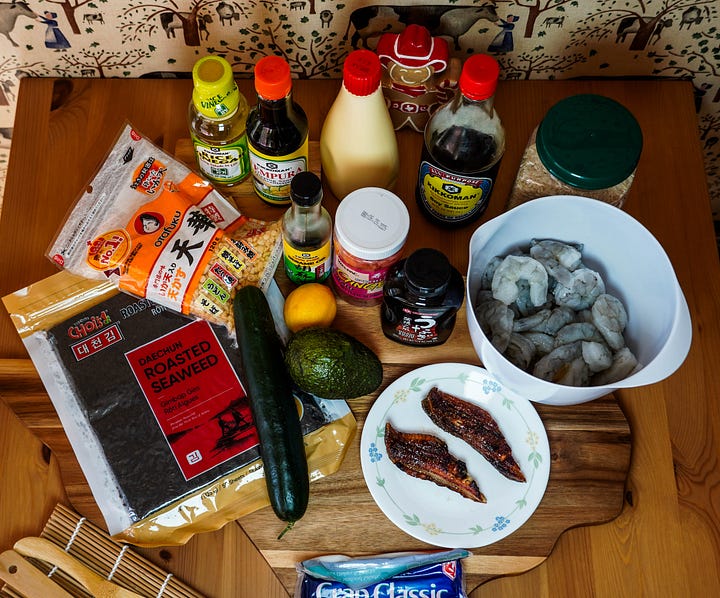
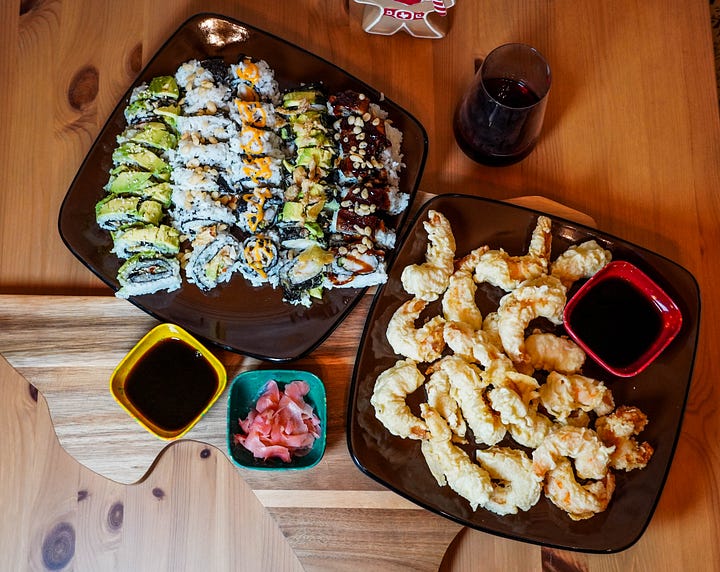
When asked if he could just have one meal for the rest of his life, Sergio Perez selected sushi — “if it really is only one!” I have an immense amount of respect for that response; sushi is specific enough that I'm not going to grumble (I hate it when people pick something like “Chinese food” as their favorite dish; THAT'S NOT A DISH) but broad enough that you can encompass a lot of variation.
I've never made sushi before, but I've always wanted to — so shoutout to Sergio for finally giving me the opportunity! We're whipping up this meal for the Las Vegas Grand Prix, because a big-ass sushi sample platter seems like exactly the kind of thing I'd end up eating at 2 am in Vegas.
This Week's Recipes
Here's the thing about sushi: I knew I needed a website that would provide me with some decent authenticity, but that could also provide me some firmly Americanized recipes. That's why I love Crafty Cookbook: this site has all the information you could ever want on sushi — including a beginner's guide and a full page dedicated to breaking down the types of sushi available.
Because I didn't trust my ability to work with raw fish at home, I also wanted some Westernized recipes, which is exactly what you'll get at Crafty Cookbook. The best of both worlds!
Core Recipes:
Supplemental Recipes:
Cooking Sushi
The key to any good sushi is your rice.
Sushi rice is made from short-grain rice which is seasoned after cooking — and yes, you can make it on your stovetop! Obviously a rice cooker will make the whole process easier, but it's totally doable without one.
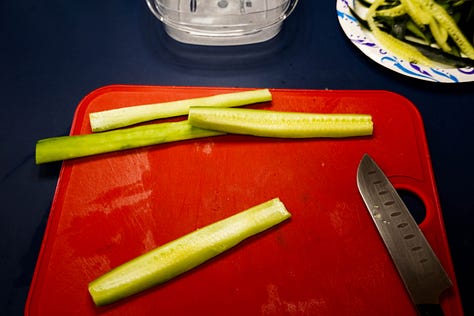
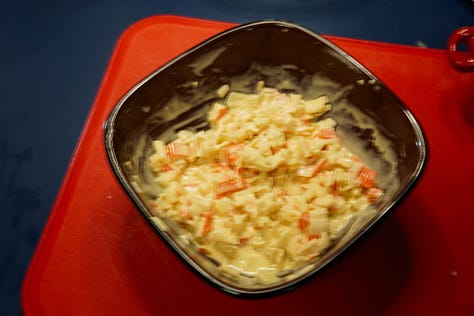
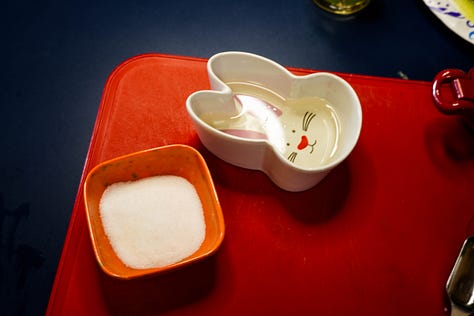
There are a few secrets to good sushi rice, and the first one is rinsing. RINSE. THAT. RICE. Rinse and drain and rinse and drain and rinse and drain a few more times, until the water runs clear. This washes off the starches on the outside so that, when it cooks, you get the texture you're looking for.
When your rice is thoroughly cleaned, add your rice and some lukewarm water to your pot, then cover it up and bring it to a boil. Let it boil for just a few minutes, then reduce the temperature to a gentle simmer for 15 minutes. That done, remove the pot from the heat and let it stand for about 15 minutes before seasoning.
The seasoning itself is pretty simple: Pop the rice into a bowl and stir in sugar, salt, and water — and really give it a stir. You want every grain covered! After that, let the rice cool down to room temperature.
If you're anything like me, then you spent your rice cooking time also prepping your ingredients for your sushi rolls. I sliced up my avocado and cucumber, then mixed together a quick crab salad out of Japanese mayo, lemon juice, sesame oil, soy sauce, and shredded imitation crab sticks.
I also got started on my tempura shrimp, which is the most challenging part of the whole affair, in my opinion. Peel and devein all your shrimp, then rinse them under cold water and pat ‘em dry. That done, make some shallow slits on the underside of the shrimp and straighten them out. Plus, get a fryer heating to 375 degrees.
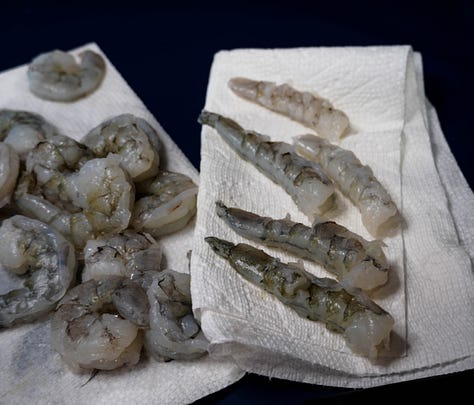
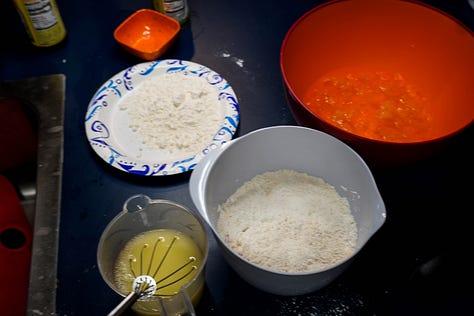
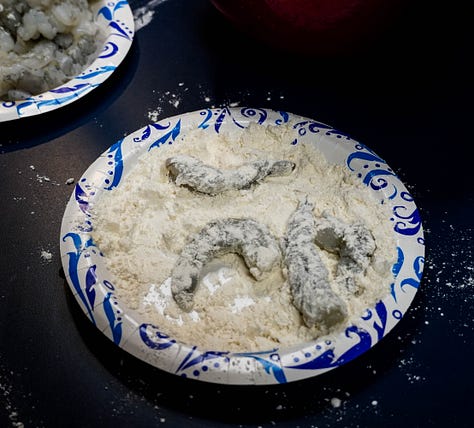

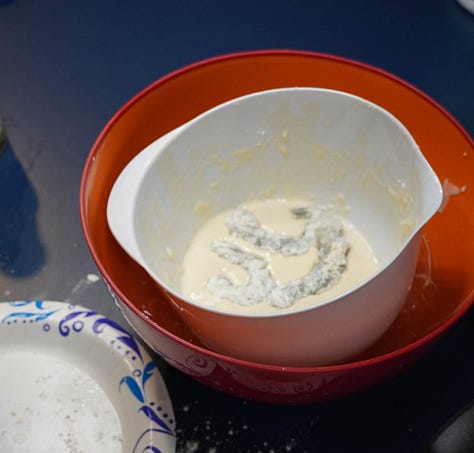
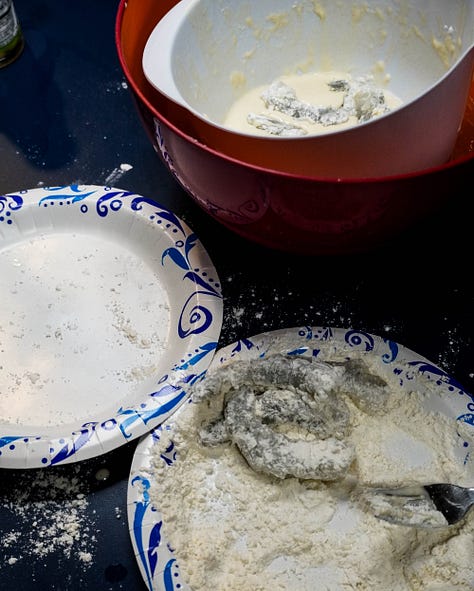
For the tempura batter, whisk together ice cold water and an egg in one bowl, then flour and cornstarch in another bowl. Keeping everything ice cold in an ice bath, whisk the water/egg mixture into the flour/cornstarch mixture.
Coat your shrimp in some dry flour, then in the wet tempura batter, and plop it into the oil. If you have a deep fryer with a basket, do not use the basket; the shrimp will just get stuck to it. Pop the shrimp in, stir it after a few seconds to make sure it's not sticking, and then fry for a total of two or three minutes. Scoop the shrimp from the oil and let it dry and cool on a wire rack (or a plate with a paper towel).
Then comes time to make the sushi. I highly recommend looking up a YouTube tutorial here, because trying to read or write any explanation of this process felt incredibly clumsy for me.
I laid out my nori sheets on a sushi mat, covered them with rice, then flipped them over and lined up my toppings on the sheet. I made a few combinations of tempura shrimp, crab salad, cucumber, and avocado. Begin tightly rolling the sushi over the toppings, using the mat to keep the tension, and curl it all up nice and tight. If you want to add toppings like avocado or barbecue eel, lay it on top, then cover the roll with saran wrap and your sushi mat, and squeeze just a bit to conform the topping to the roll. Then, using a sharp knife, cut everything up.

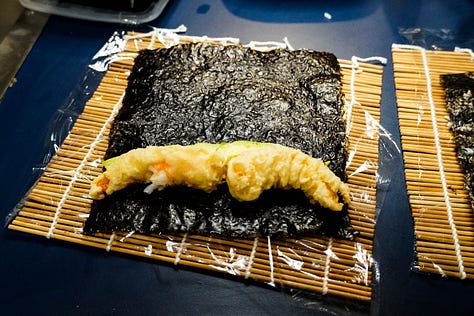
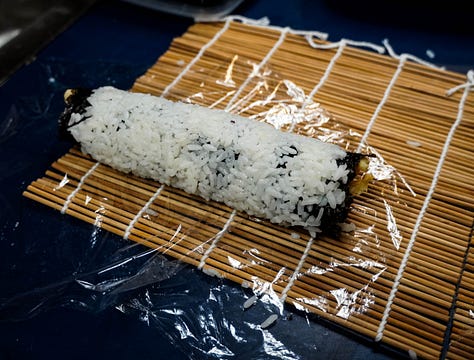
I added a variety of other toppings to my rolls: tempura crunchies, eel sauce, sesame seeds, sriracha mayo, crunchy fried onions, and whatever else your heart desires! Serve with pickled ginger, soy sauce, and a heaping pile of your tempura shrimp and some tempura dipping sauce. Et voilà!
So, What's The Verdict?
Sushi is admittedly a very intimidating dish to cook at home, and that is exactly why I didn't bother with using raw fish. I know that's more authentic, and probably more what Sergio Perez had in mind when he said he liked sushi — but I simply do not trust my ability to prepare it properly at home.
Taking the ‘raw fish’ element out of the equation made the whole sushi thing much easier, and much more approachable. I thought about my favorite cooked sushi fillings and toppings — eel, tempura shrimp, and crab salad — and decided that those are the elements I'd focus on. They're cooked, and safe to eat, and I'd feel confident making them at home.
And after that, honestly — it was pretty easy!
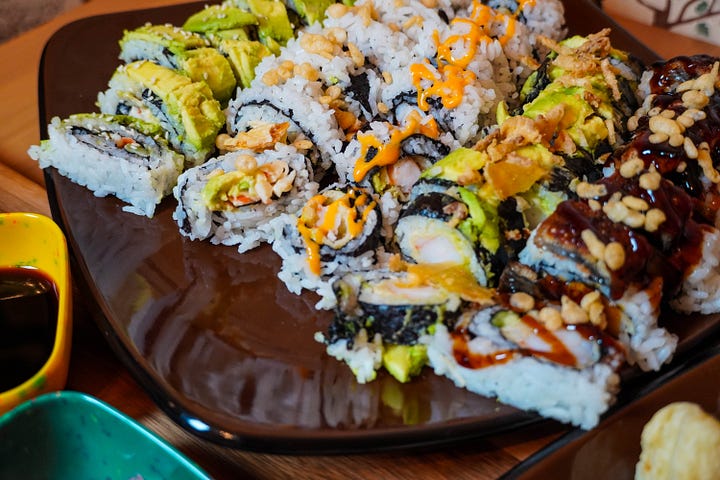
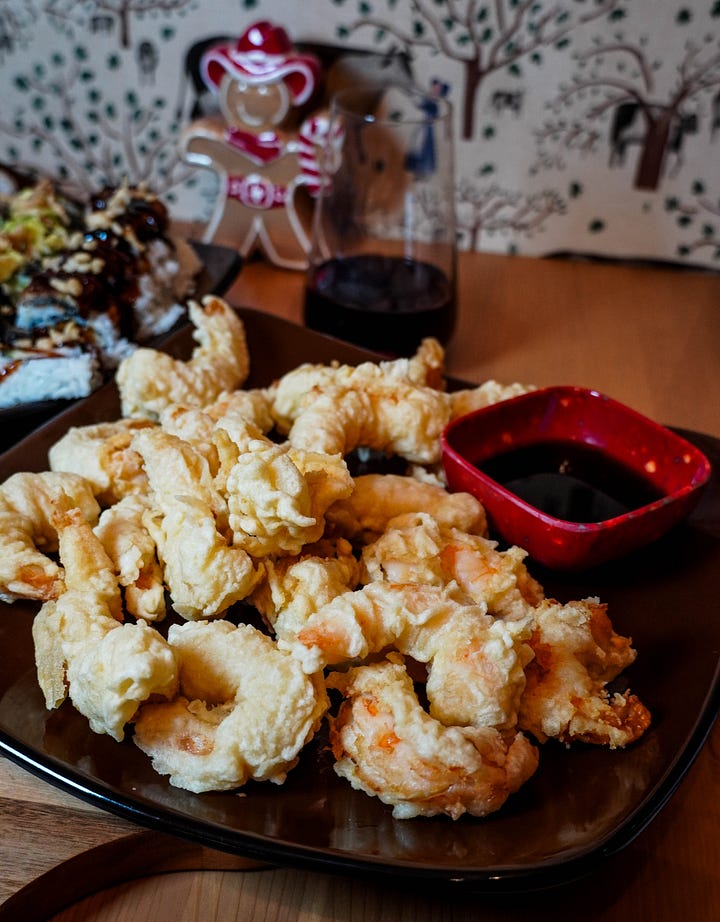
I know my sushi was not handsome. I know I could definitely benefit from additional attempts at assembling, rolling, and slicing everything up. But also: I made sushi at home! It was delicious! And honestly, it's the kind of thing I'd happily make on a weeknight where I have a little extra time on my hands.
My best advice for anyone trying to make Checo's favorite dish at home is to just take your time. I dedicated a full day to my sushi experience, so I could dedicate (most of) my attention to each step of the process. Once you realize that sushi is more an assemblage of ingredients, you realize that you just have to focus on making those ingredients as good as they can be.
And if you don't feel like making a roll, well — I bet all these ingredients would be delicious tossed in a bowl together. Do what works for you.
Ready… Set… COOK!
If you’re interested in seeing the progression of Grand Prix Gastronomy, you’ll be able to do so in a few places. Instagram will feature most of the visual content, while Substack will be a little wordier. If you need a handy mid-week roundup, you’ll be able to find those on Twitter.
Here are all the relevant links in one place, if you want to subscribe:
All Grand Prix Gastronomy-related content will be free — but if you want to drop me a donation on PayPal, that’s always welcome.
Plus, if you're looking to delve deeper into motorsport history, don't forget to check out my new podcast, Deadly Passions, Terrible Joys! I have a Patreon; sign up, and you'll receive extra content!






